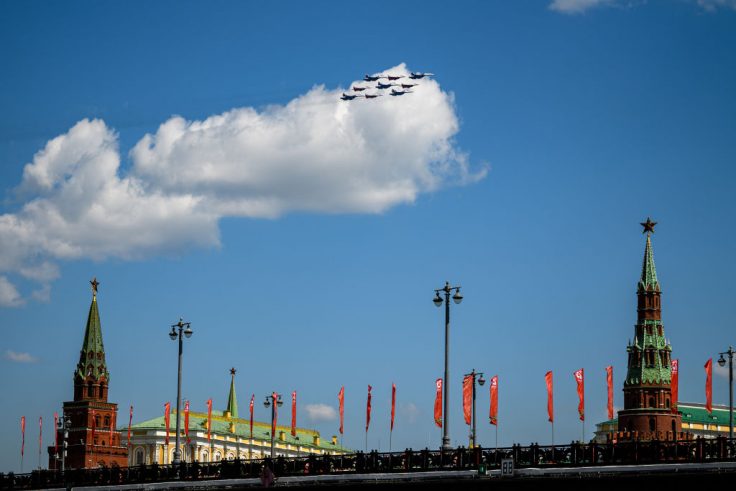During the Cold War, Moscow's Znamya Truda (Banner of Labor) Aircraft Plant No. 30 was one of the prime intelligence-gathering targets for defense attachés at the U.S. embassy. These officers, who monitored the plant's production, would regularly rise from their beds in the middle of the night.
Their mission: Try and snap furtive photographs as trucks laden with the Mikoyan MiG-29 fighter models produced at this facility traveled under the cover of darkness to a secondary assembly site and flight-test airdrome in Lukhovitsy—80 miles southeast of Moscow and far away from the prying eyes of U.S. intelligence.
Plant No. 30 was the main production facility for the MiG-29, which for years was rated one of the finest dogfighting jet aircraft ever designed. First entering service in 1982, it is still flown by the air forces of the former Soviet republics and several NATO nations, as well as by other export customers, some as far away as Peru and India.
Over 1,600 MiG-29s were built, most of them at Plant No. 30, and at the time I visited the facility toward the end of the Cold War there were some 20,000 personnel employed there. Its buildings sprawled over such a wide area that there was a fleet of buses that operated inside the factory's territory to ferry employees from one end to the other.
Plant No. 30 was also emblematic of the resources and personnel that Soviet central planners could mobilize for defense spending. At peak production, the factory was a beehive of activity that turned out 180 aircraft in one year—a new fourth-generation fighter rolling out the factory door every two days.
The complex designs and level of technology embedded in fighter aircraft—not to mention the soaring unit price—in the 21st century almost preclude fighter aircraft being built at the tempo that was the norm during the Cold War. For example, the latest and most advanced version of the United States-made F-16 is built at a factory that has a maximum capacity of only four new aircraft per month.
Partly as a consequence of these realities, the wartime-tempo production runs came to an end, and by the turn of the century Plant No. 30 was operating at a fraction of its capacity. Eventually its assets and production machinery were moved to Lukhovitsiy, and the massive complex became idled. Recently, a group of aviation enthusiasts illegally entered the deserted plant in the middle of winter and shot more than 30 minutes of footage in the different assembly and administrative buildings.
The factory is a typical post-Soviet "ghost" where one of the three videographers is seen in the now-empty and unlit cavernous assembly building. The only signs that this was one of the largest aircraft production lines in the world are the long-abandoned half of a wingless, rusted, and deteriorating MiG-29 fuselage and sets of aircraft radomes and other spare parts gathering dust.
In Moscow, former designers who worked on the MIG-29 pointed out to the Washington Free Beacon that it is likely to be the last aircraft in history to carry that label, as the company's assets are disappearing. A declining demand for Russian military aircraft is one reason. Another is that most of the export orders in the past 30 years have gone to Mikoyan's onetime archrival, Sukhoi, the other Russian fighter-aircraft firm.
"This is the end of MiG as an aircraft company and the plans to eradicate this historic Plant No. 30 production site are entirely due to money that can be made from its location being so near the center of Moscow," said one former MiG engineer. "This factory, which dates back to the time of tsarist Russia, is not being demobilized for any purposes of efficiency in defense planning. It will be knocked down and the vast territory it occupied sold off to real estate developers. In the present day a piece of land this size is worth untold millions of dollars."
The sale of the plant falls under control of the Rostec holding company, which is run by longtime Putin ally and fellow KGB veteran Sergei Chemezov and controls most of Russia's defense sector. He is described by Russian history professor and political analyst Pavel Luzin as "a leading member" of Putin's inner circle. Additionally, the huge corporation's senior management contains "a number of people with close connections to Russia's secret services, or at least very colorful biographies," as Luzin wrote in a recent profile of Rostec.
A retired U.S. government analyst of Russia's military explained to the Free Beacon that "we are witnessing the collapse and selling off of Russia's onetime nationwide aerospace and defense-industrial empire. This is why, when Putin gives his once-a-year address to the joint session of the Russian parliament, he talks almost exclusively about nuclear weapons.
"Moreover, these are not just nuclear weapons of the type we are familiar with, but literally those built solely for some 'doomsday' scenario," the analyst said. "This is because piece-by-piece the industry that used to build Russia's conventional, non-nuclear weaponry is disappearing and his nuclear forces will end [up] being the only military power he has left. A colossally dangerous scenario."
